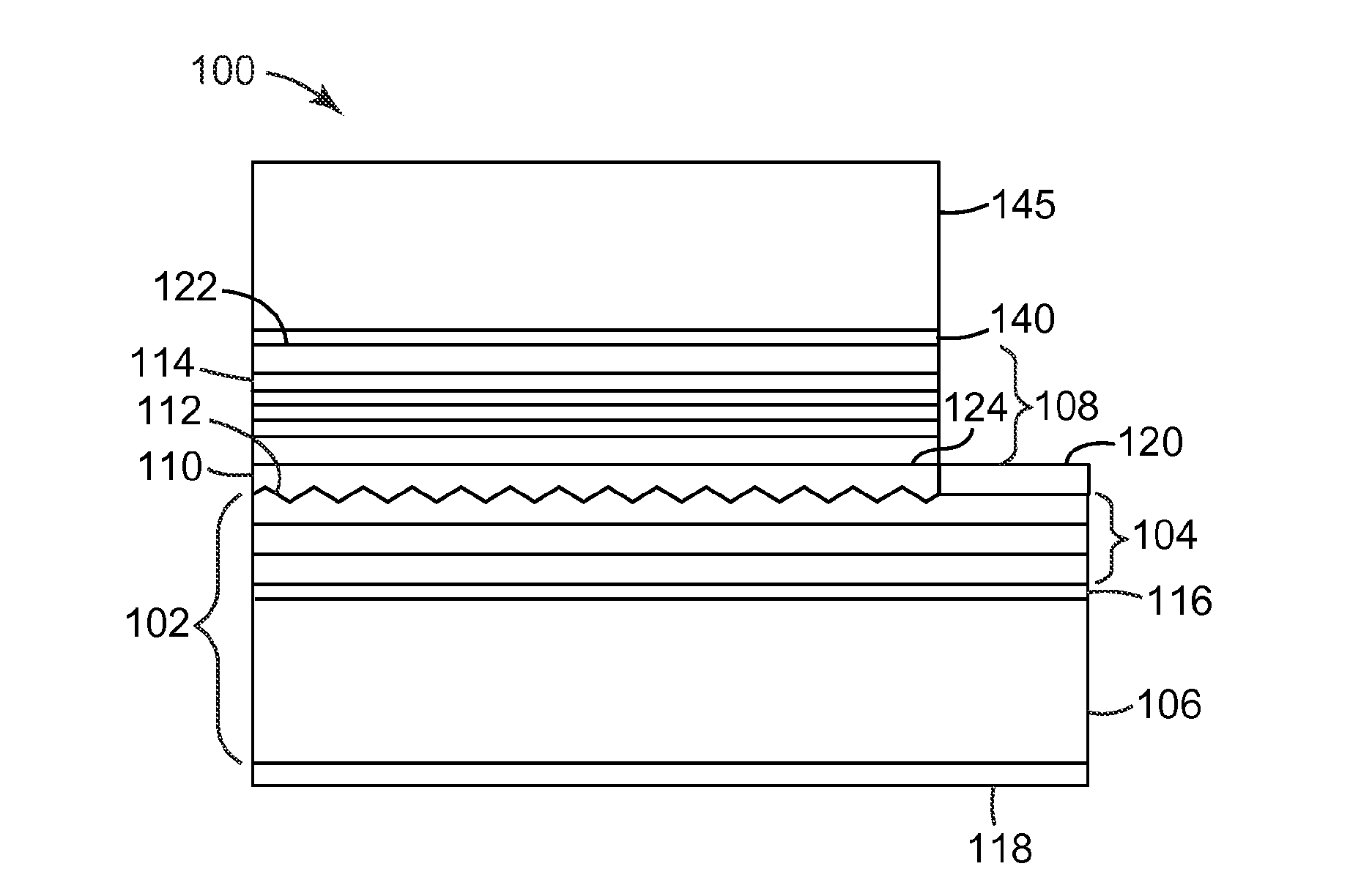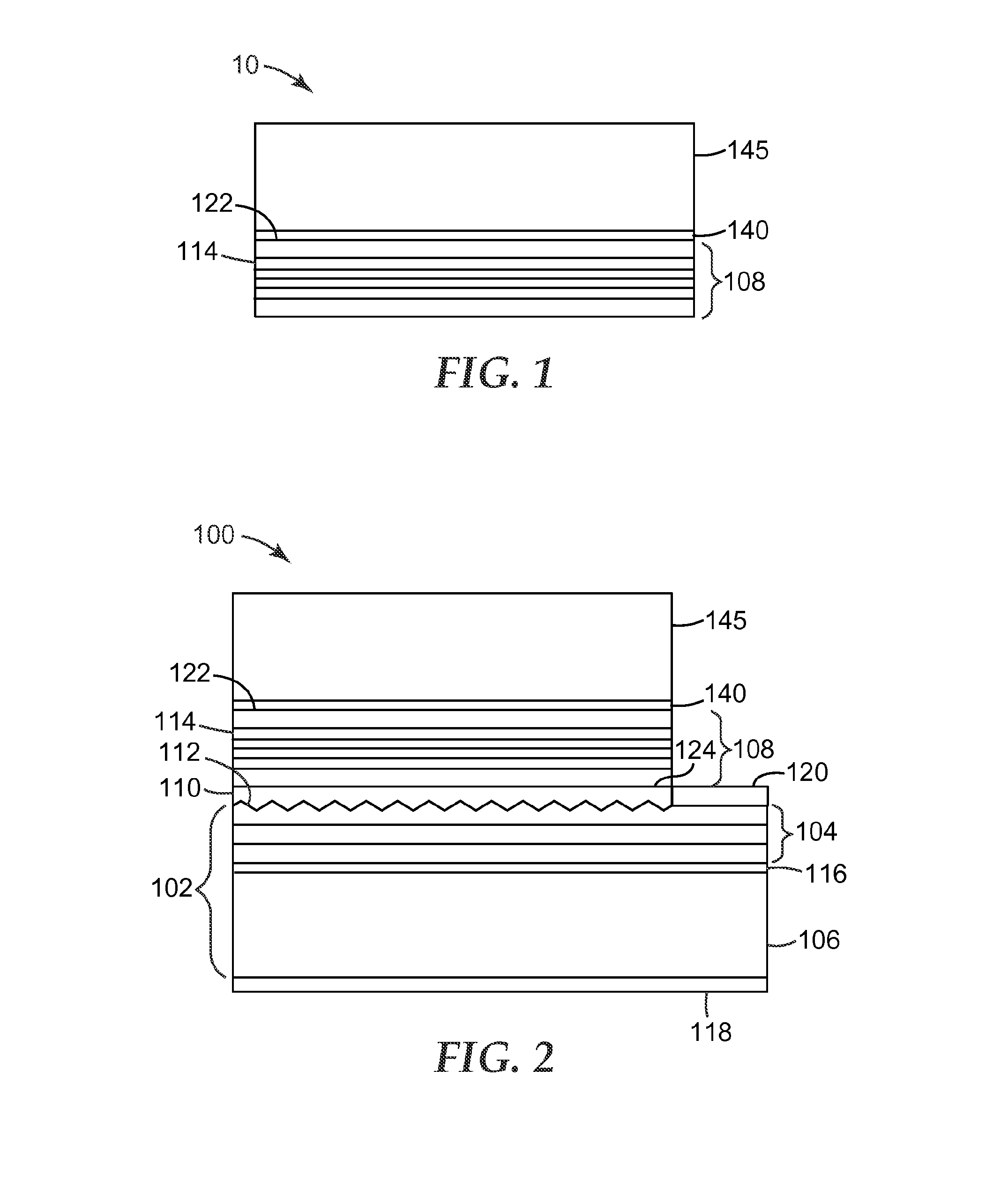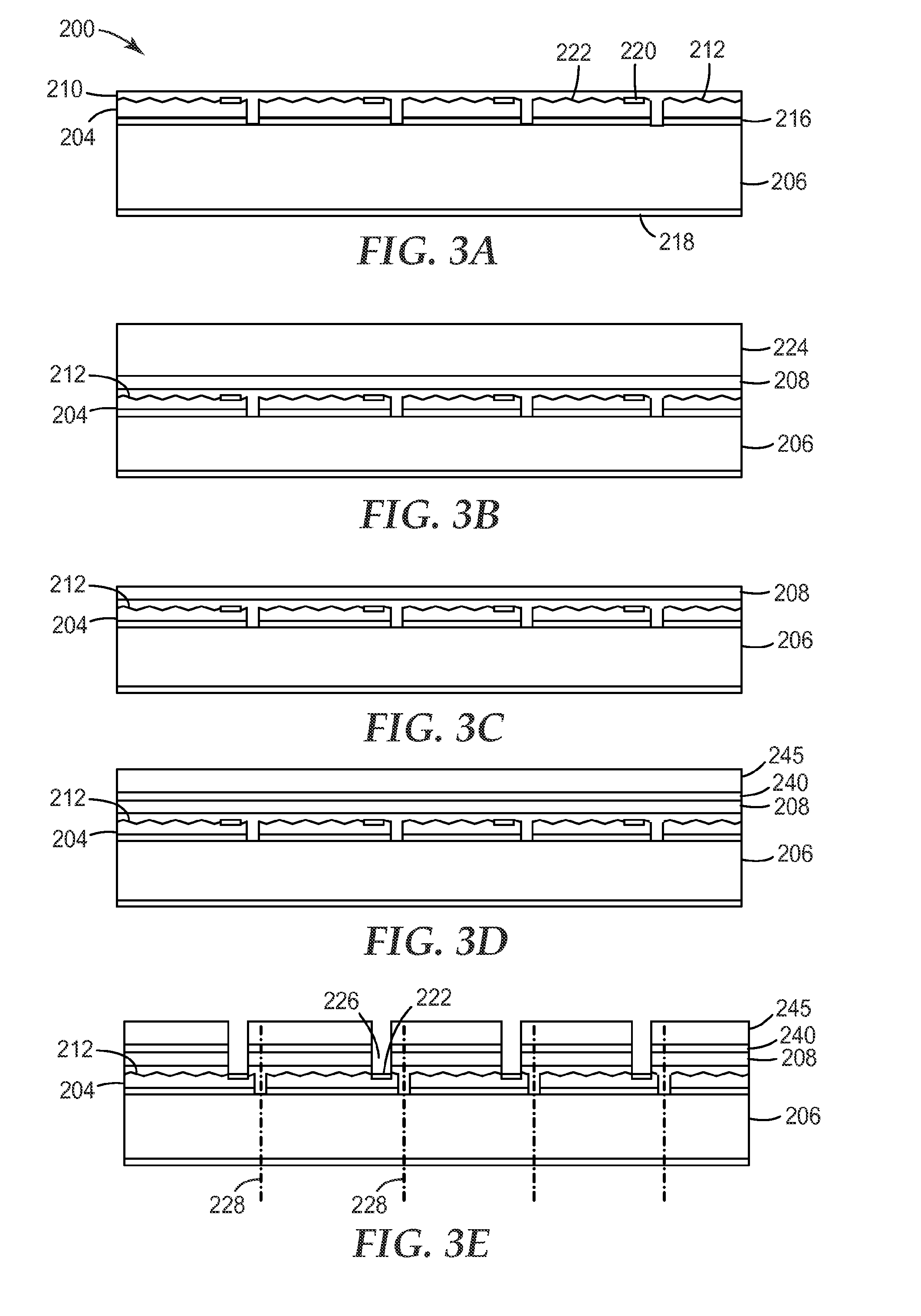Light emitting diode component comprising polysilazane bonding layer
- Summary
- Abstract
- Description
- Claims
- Application Information
AI Technical Summary
Benefits of technology
Problems solved by technology
Method used
Image
Examples
example 1
[0073]Monochrome platelets consisting of II-VI converting layers bonded to a glass wafer using polysilazane-acrylate blended adhesives were fabricated. The starting substrate consisted of a bottom substrate layer of InP with a GaInAs buffer layer followed by the II-VI converting layers on top and were grown using molecular beam epitaxial (MBE) process, similar to those described in for example in WO2009 / 048704.
[0074]To promote adhesion of the II-VI material to the final LED device, 300 nm of silicon nitride (Si3N4) and 100 nm of SiO2 were deposited onto the II-VI layer at about 100° C. using plasma enhanced chemical vapor deposition (PECVD) method. Prior to coating the Si3N4 and SiO2 layers, the surfaces of the II-VI material were reactive ion etched (RIE) with O2 plasma for 120 seconds then by argon plasma for 16 seconds.
[0075]The Si3N4 / SiO2 coated side of the II-VI material was bonded to a temporary glass carrier substrate to aid in the removal of the InP substrate and GaInAs buff...
example 2
[0084]For Example 2 a PSZ (HTT 1800)—5 weight % acrylate adhesive (SR9008) containing 1 weight % each of two initiators, dicumyl peroxide (DCP) and 2,2 dimethoxy-2 phenol acetphenone (DMAP), was prepared using the process described in Example 1.
Color Stability and % Transmission of Examples 1 and 2
[0085]For convenience, the following experiments were carried out in air except the curing process.
[0086]Approximately 10 microliters of the adhesive of Example 1 and Example 2 were each dispensed on a separate previously cleaned glass slides (2.5 cm×2.5 cm). The glass slides were cleaned in an ultrasonic bath using DI water, acetone and methanol in sequence. The slides and cover slips were then dried by blowing nitrogen gas. A previously cleaned (as described above for glass slides) glass cover slip (1 cm×1 cm) was placed on each glass slide on the adhesive drop and the cover slip were pressed lightly to spread the adhesives. Each slide-adhesive-cover slip was then radiated for 5 minutes ...
examples 3-8
[0089]Various other adhesive comprising a mixture of PSZ (HTT 1800) and various acrylate monomers were prepared using the process described in example 1. The acrylate monomer and concentration thereof is described in the following table:
Example:Acrylate used:310wt-% SR29545wt-% SR399LV55wt-% SR44465wt-% SR351LV75wt-% SR904185wt-% SR9012
[0090]The % transmission of Example 3 was evaluated in the same manner as previously described. After 4 weeks of aging at 185° C., Example 3 appeared to be thermally stable.
[0091]A study of the thermal stability of Examples 1 and 3 was conducted using thermo-gravimetric analysis (TGA). The test results indicated that such adhesives are thermally stable and usable up to about 200° C. or higher.
[0092]The % transmission of Example 3 after 5 weeks of aging at 185° C. ranged from 90% to 93% for wavelengths of 400 nm to 700 nm
[0093]The % transmission of Examples 4-8 after 5 weeks of aging at 185° C. was at least 89% for a wavelength of 400 nm and 91-93% for...
PUM
 Login to View More
Login to View More Abstract
Description
Claims
Application Information
 Login to View More
Login to View More - R&D
- Intellectual Property
- Life Sciences
- Materials
- Tech Scout
- Unparalleled Data Quality
- Higher Quality Content
- 60% Fewer Hallucinations
Browse by: Latest US Patents, China's latest patents, Technical Efficacy Thesaurus, Application Domain, Technology Topic, Popular Technical Reports.
© 2025 PatSnap. All rights reserved.Legal|Privacy policy|Modern Slavery Act Transparency Statement|Sitemap|About US| Contact US: help@patsnap.com



